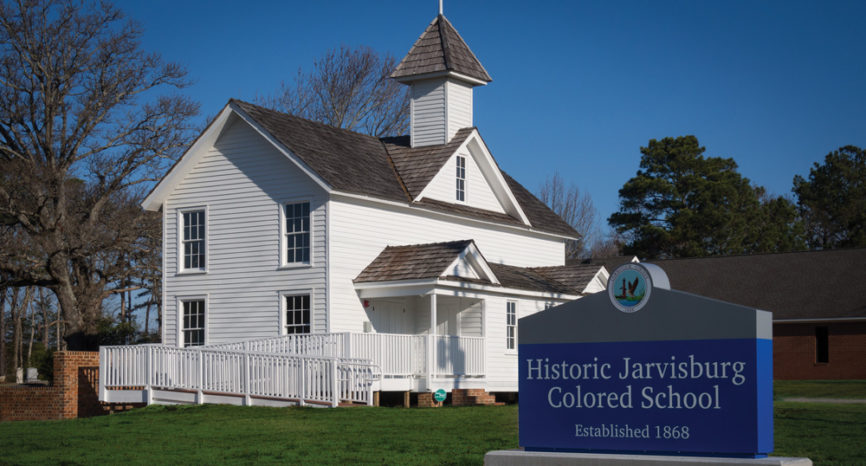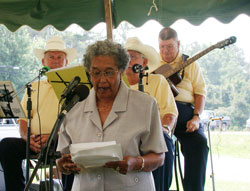It is a simple white wooden structure that stands beside the road in Jarvisburg. The sign out front reads “Historic Jarvisburg Colored School, established 1868.”
The building is about a mile and a half south of The Cotton Gin shop, and in the offseason cars are whizzing by at 50 or 55 miles per hour and during the summer…well, everyone is hurrying to get to the beach.
But that building, with its narrow belfry lifted above the roof, at one time called children to class. And the story it tells is an important part of the story of our nation.

At a time when wealthy sportsmen from the northeast were building schools for the white children of Currituck County, HJCS is a monument to the failed belief that a separate but equal education was equal. Its size & simplicity of construction gives the lie to the doctrine that the colored population and white children of Currituck County were receiving equivalent educations.
The Jarvisburg Colored School was founded in 1868, and the original structure was probably located about two miles north of where it currently stands. That a school was given so much emphasis by the newly freed slaves of the area after the Civil War tells how important they believed educating their children would be.
The school was moved in 1903, and when architects surveyed the building to renovate it, they found evidence that some of the original beams and structure were still intact.
There was, within the community, a burning need to learn. The school only went to the sixth grade, and families tell the tale of parents and grandparents that repeated the sixth grade over and over again for whatever glimmer of additional education they could find.
In an interview when the school was being renovated in 2003, Mrs. Ruth Dillard, who graduated from the school, recalled how often that happened. “My mother did that…She went to the sixth grade over and over,” she said.

The school closed in 1950, when the Currituck School system consolidated the colored schools within the county, and in the wake of the Brown vs Topeka Board of Education (1954), holding that separate facilities were inherently unequal, Currituck County’s white and black school systems were fully integrated by 1960’s.
The educational experience at the school, in spite of overcrowding, was remarkably similar to any other child’s primary school experience of that time. “We had prayers in the morning and the pledge of allegiance,” Mrs. Dillard says. “We had an hour for lunch and the boys always played marbles.”
Yet, the contrast between the Jarvisburg Colored School and the schools built for the white families of the county by publisher and sportsman Joseph Knapp is stark. The latest technology was used to keep the winter chill out at the Poplar Branch High School. In Jarvisburg, heat was provided by two potbellied stoves.
“In the winter, it was cold in there, let me tell you,” Mrs. Dillard says.
Although the school building was not as nice as the school the white children had, and there was never more than two teachers in the school, in interviews about their time in the school, the students who attended focused on the positive. There was a sense of community and self-worth that even the finest schools of today would find it hard to match.
“It was a good experience,” said Antoinette Hadden, an alumni of the school who started first grade in 1930.
The school is now on the National Register of Historic Places. It is particularly important because of its age, and it is considered an outstanding example of pre-Rosenwald construction.
Beginning in the 1910’s, philanthropist Julius Rosenwald and Booker T. Washington developed a standardized designs for the segregated African-American schools of the day, hoping a better physical facility would lead to better educational outcomes. Over 5300 schools were built in 15 southern states.
Renovation of the Jarvisburg Colored School was completed in 2008. The building and museum that is housed in the school are supported through donations to the Historic Jarvisburg Colored School Association.
